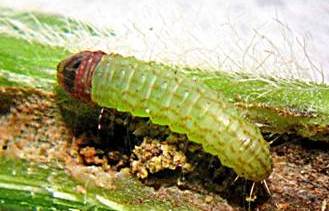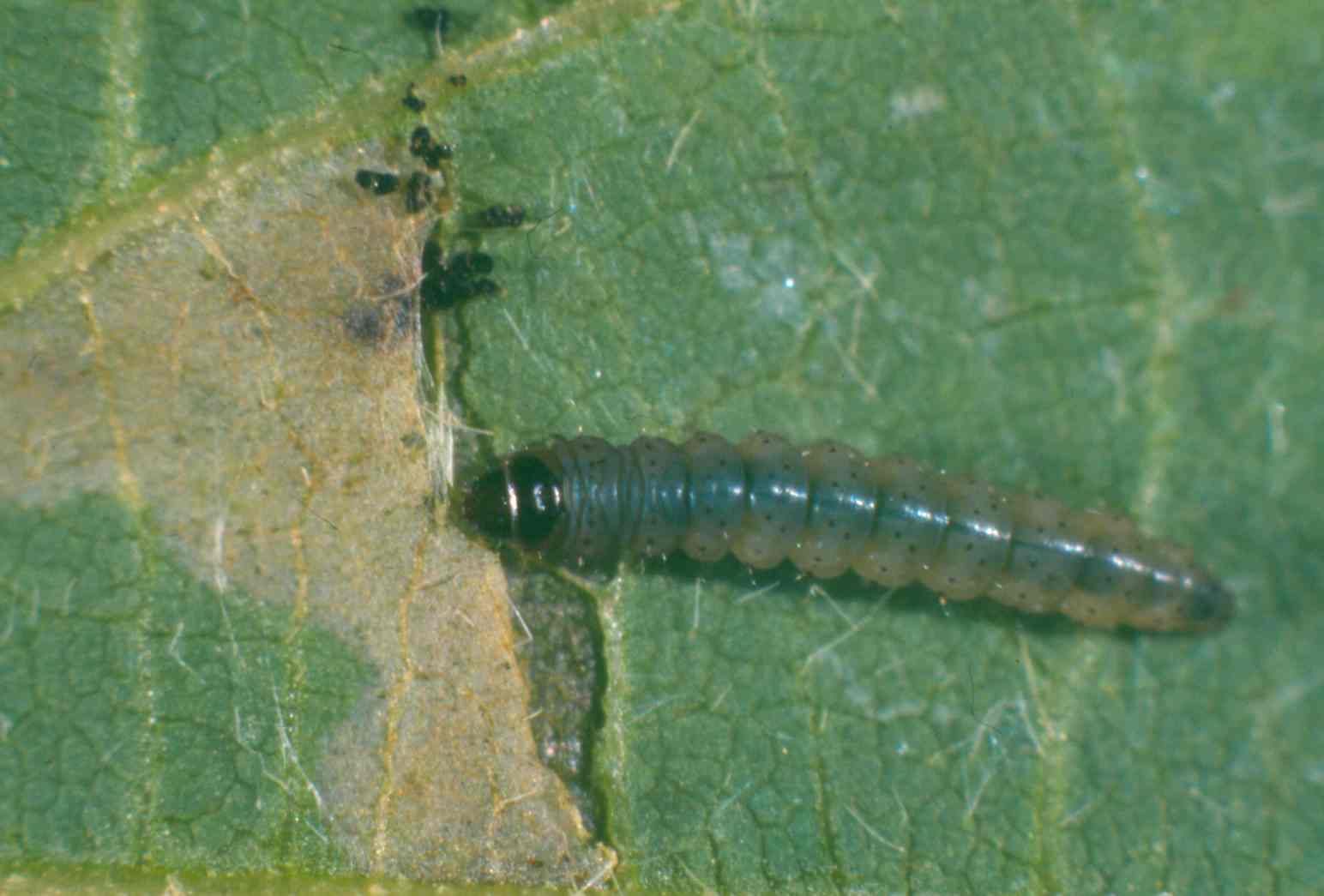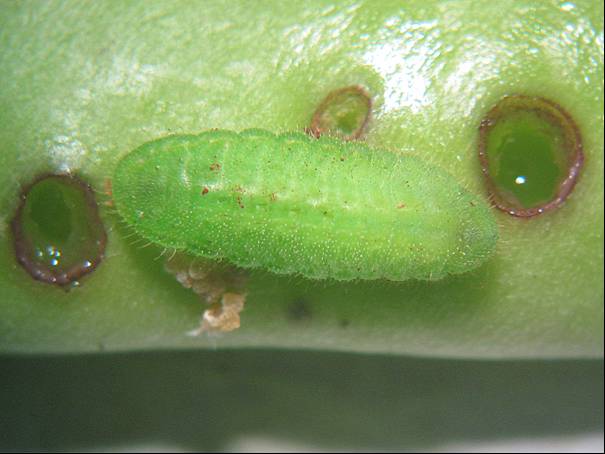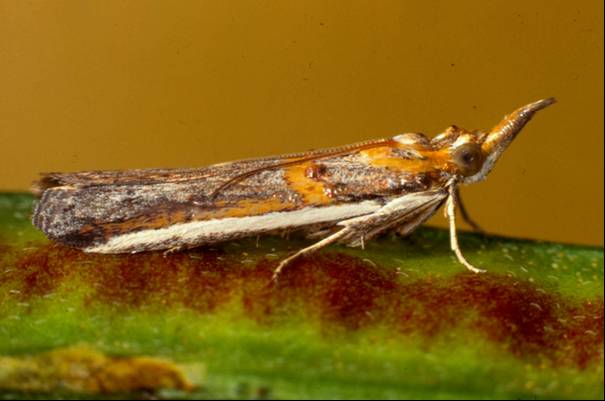Once again, lucerne crown borer (LCB) (Zygrita diva) has been active in soybeans this season. Worst affected regions were the Northern Rivers and the Liverpool Plains in NSW, but reports were also fielded from the Bundaberg, Fassifern and Darling Downs regions in Queensland. In some of the severely affected crops, over 80% of plants were infested, and up to 70%… Read more »
In response to the recent confirmation of the damage potential of green mirids in faba beans, Pulse Australia has successfully applied to the APVMA for a permit to allow the use of dimethoate for the control of mirids in faba beans (PER82378). The permit is active from 1 June 2016 to 31 May 2021, and is applicable in all states,… Read more »
Bean podborer (Maruca vitrata) have been observed in large numbers (>20/m2) in flowering/podding mungbeans planted from January onwards in the Burnett region. They are likely to be present in other coastal/subcoastal regions such as the Burdekin, Callide Valley and the Wide Bay/Burnett (particularly in late-planted crops), and to a lesser extent in the eastern Darling Downs, and Emerald in Central… Read more »
Over the past two winters, agronomists and growers have been asking whether the green mirids that they are finding in faba beans are doing any damage. Until now, the short answer to that was that we simply didn’t know. In 2014 Department of Agriculture and Fisheries (DAF) Entomology conducted a preliminary trial to determine if green mirids could cause the… Read more »
Helicoverpa armigera active now. This spring a number of agronomists have just started monitoring pheromone traps across the northern region, and the results from the past two weeks illustrate how useful pheromone traps can be. Over the past 1-2 weeks, the traps are catching relatively high numbers of Helicoverpa armigera, and low catches of H. punctigera. In September it is generally assumed that… Read more »
There is an understandable level of concern about how best to manage etiella (Etiella behrii) in summer mungbean crops following the unexpectedly high etiella infestations (and corresponding seed damage and contamination) in spring mungbean crops on the Downs and in Central Queensland and North Western New South Wales. Responding to the etiella threat without reacting prematurely and creating more pest… Read more »
Significant soybean moth activity has recently been reported in some Burdekin soybean crops. Soybean moth is a generally a minor soybean pest but significant outbreaks have been reported periodically in all soybean growing regions. Feeding damage Larvae feed mostly within the leaves, making distinctive pale leaf mines, and often distorting leaves. Soybean moth is present in low numbers in most… Read more »
Lucerne crown borer (Zygrita diva) (LCB) is causing severe damage in a number of soybean crops in the Bundaberg region of SE Qld, and on the North Coast region of NSW. In some cases up to 75% of plants are infested and early plant death is evident. Damage seems to be worse in the early (November-planted) crops which were sown… Read more »
The larvae of the grass blue butterfly (Zizina labradus) are normally minor leaf feeding pests, although they can be damaging in seedling crops where they attack terminals and axillary buds. Soybeans are their favoured summer pulse host, but they can also attack other pulses including navy beans.
A significant etiella outbreak was recently reported in pod-filling mungbean in the Moree region of North Western NSW. In this particular crop, it is estimated that etiella larvae have infested pods on 50% of plants. Etiella eggs, at low densities, were also recently observed in an early flowering crop near Bungunya (west of Goondiwindi, Qld).





